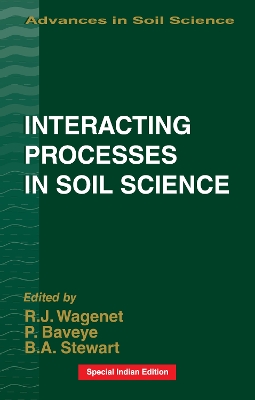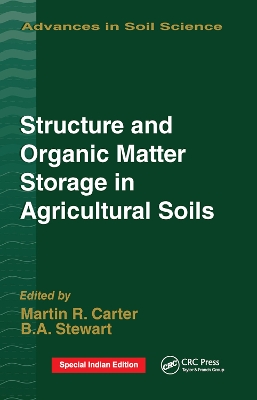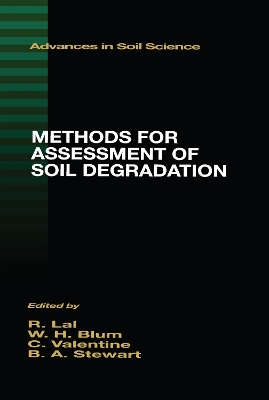Advances in Soil Science
4 primary works
Book 2
Interacting Processes in Soil Science
by R.J. Wagenet, Philippe Baveye, and B.A. Stewart
Interacting Processes in Soil Science focuses on coupled processes in soil. Topics covered in this important volume include the effects of inorganic salts upon water flow, modeling of sorption, transport and transformation of organic solutes, and the effects of microorganisms on silicate clay minerals. The book presents studies and approaches that can be extended and complemented by innovative work in the future.
Interacting Processes in Soil Science will be an essential reference for all researchers and students in soil science, soil and water engineering, civil and environmental engineering, earth sciences, and hydrology.
Book 6
Soil Management and Greenhouse Effect
by John M. Kimble, Elissa R. Levine, and B.A. Stewart
Book 8
Structure and Organic Matter Storage in Agricultural Soils
by M R Carter and B.A. Stewart
Soils comprise the largest pool of terrestrial carbon and therefore are an important component of carbon storage in the biosphere-atmosphere system. Structure and Organic Matter Storage in Agricultural Soils explores the mechanisms and processes involved in the storage and sequestration of carbon in soils. Focusing on agricultural soils - from tropical to semi-arid types - this new book provides an in-depth look at structure, aggregation, and organic matter retention in world soils.
The first two sections of the book introduce readers to the basic issues and scientific concepts, including soil structure, underlying mechanisms and processes, and the importance of agroecosystems as carbon regulators. The third section provides detailed discussions of soil aggregation and organic matter storage under various climates, soil types, and soil management practices. The fourth section addresses current strategies for enhancing organic matter storage in soil, modelling techniques, and measurement methods.
Throughout the book, the importance of the soil structure-organic matter storage relationship is emphasized. Anyone involved in soil science, agriculture, agronomy, plant science, or greenhouse gas and global change studies should understand this relationship. Structure and Organic Matter Storage in Agricultural Soils provides an ideal source of information not only on the soil structure-storage relationship itself, but also on key research efforts and direct applications related to the storage of organic matter in agricultural soils.
Book 9



